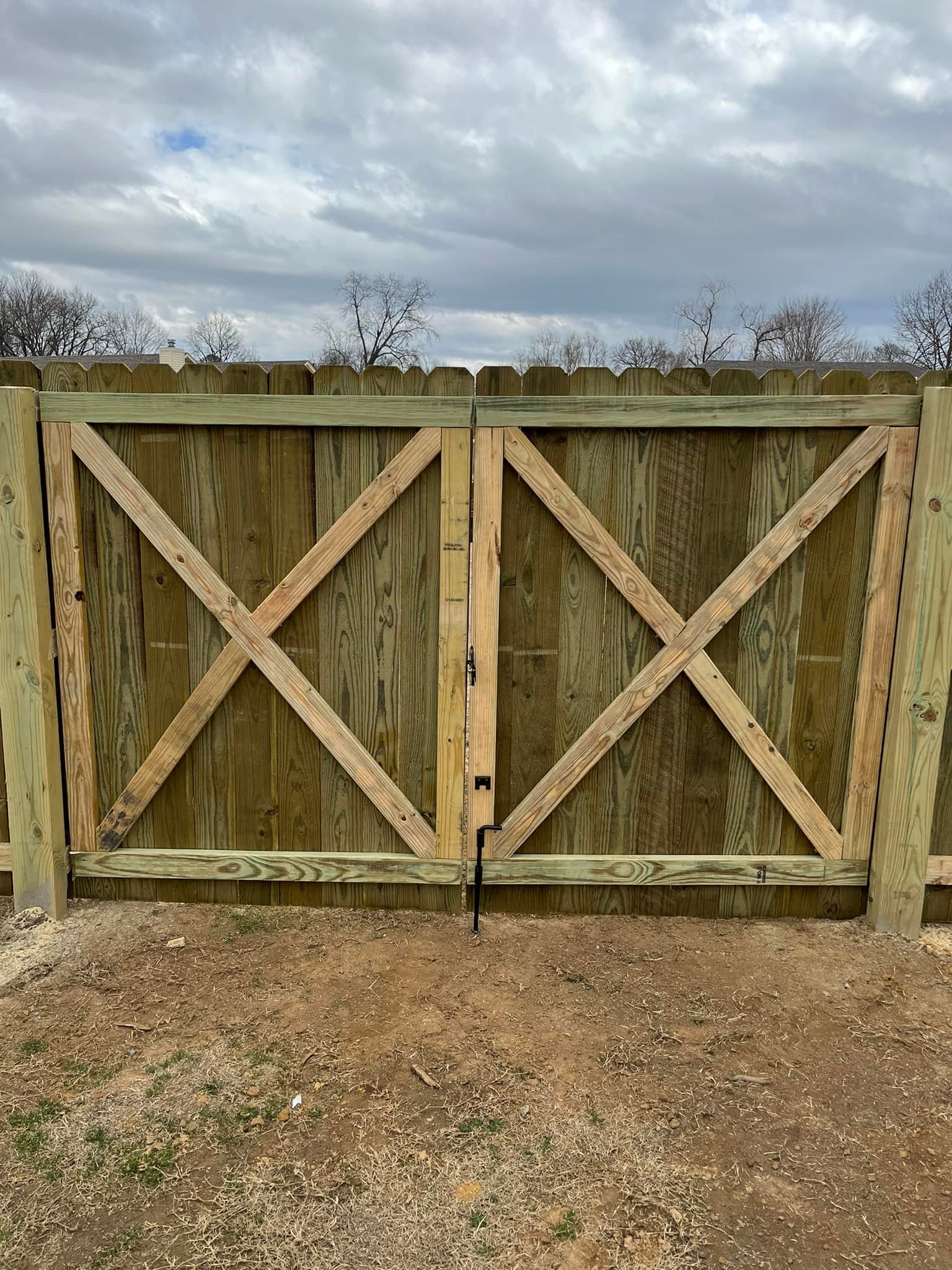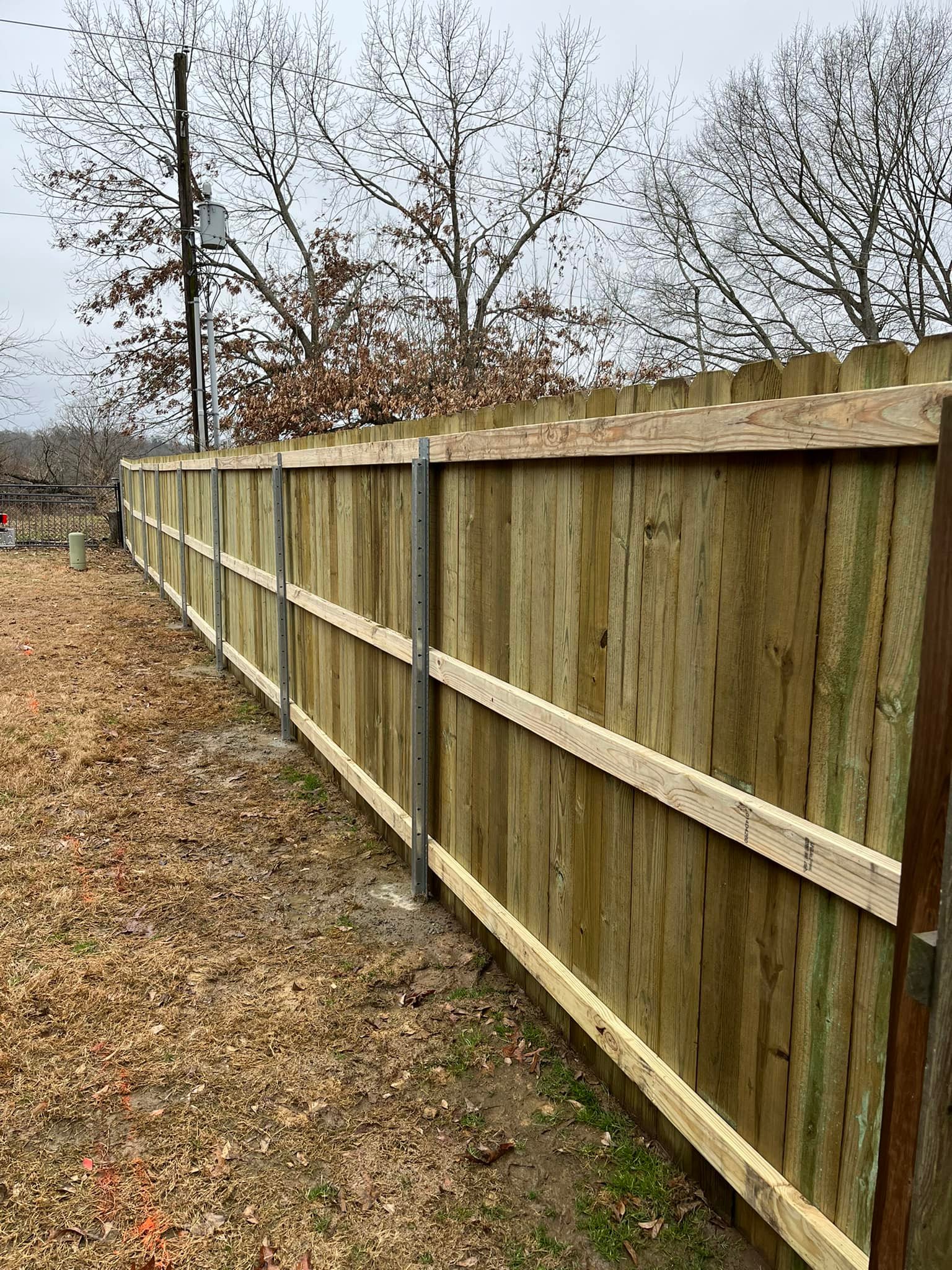Expert Fence Building Fort Smith AR for Sturdy and Stylish Fences
Expert Fence Building Fort Smith AR for Sturdy and Stylish Fences
Blog Article
A Comprehensive Consider Fence Options: Finding the Suitable Remedy for Your Demands
In the quest to discover the perfect secure fencing remedy, home owners are commonly encountered with a dizzying selection of selections, each presenting distinct advantages and difficulties. From the classic appeal of timber to the sleek resilience of aluminum, selecting the appropriate product is only part of the formula. Factors to consider of privacy, maintenance, and protection include layers of complexity to this decision-making process. Past functionality, there's the matter of visual appeals, which can transform a simple obstacle right into a declaration of design. As we check out these crucial aspects, what absolutely specifies the perfect fence for your one-of-a-kind needs?
Recognizing Secure Fencing Materials
When choosing the best fencing for your home, recognizing the various products readily available is important to making a notified decision. Each product supplies unique advantages and prospective drawbacks, affecting looks, expense, upkeep, and sturdiness. Common fence materials consist of timber, vinyl, compound, steel, and aluminum.
It can be discolored or painted to match any type of visual preference, yet calls for routine maintenance to protect against rot and insect damages. Plastic fence, on the various other hand, is a low-maintenance alternative that stands up to weathering and insects.
Steel offers improved safety and security due to its effectiveness, however it may need regular maintenance to avoid corrosion. Compound secure fencing integrates wood fibers and plastic, delivering the appearance of timber with the durability of artificial products. Picking the ideal product depends on stabilizing these variables with your details needs and budget.
Privacy and Protection Considerations
Choosing the appropriate fence product is just part of the formula; resolving personal privacy and safety requirements is just as important. A fence serves as a crucial barrier that protects home from undesirable intrusion while likewise guaranteeing a preferred degree of privacy. Personal privacy fences, such as those made from timber, plastic, or composite products, are made to block visibility, typically standing six feet or greater. Strong panels and closely spaced pickets prevail attributes, supplying convenience and comfort to house owners looking for seclusion from neighboring buildings or passersby.
Security considerations, on the other hand, prioritize discouraging unauthorized accessibility. Metal fencings, especially wrought iron or steel, deal stamina and toughness, making it difficult for trespassers to breach. These fences can be customized with additional security attributes like spikes, barbed cord, or digital surveillance systems to improve defense. Chain-link fences, while much less aesthetically obstructive, can be strengthened with personal privacy slats or displays for added safety and security and lowered exposure.
Balancing personal privacy and security is necessary, as each fencing design provides one-of-a-kind benefits. Companies and house owners need to consider neighborhood policies, aesthetic preferences, and certain site vulnerabilities when picking the proper fencing remedy, ensuring both personal privacy and safety and security requirements are satisfied efficiently.

Maintenance and Resilience
While selecting a fencing material, comprehending maintenance and toughness requirements is crucial for lasting complete satisfaction. Each fence material exhibits special characteristics that impact its longevity and maintenance.
On the other hand, vinyl fencing uses a low-maintenance choice, immune to weathering and bugs, yet susceptible to breaking in severe temperatures. Vinyl needs periodic cleaning to keep its look, but usually less upkeep than wood - fence building Fort Smith AR. Metal fencings, such as light weight aluminum or functioned iron, give robust sturdiness. Light weight aluminum is immune to rust and requires minimal maintenance, while wrought iron, though a lot more prone to corrosion, can be maintained with routine painting and inspections for rust.
Compound fence, redirected here a mix of timber fibers and plastic, integrates the natural charm of timber with the durability of synthetic products, requiring marginal maintenance and offering outstanding durability. Ultimately, the selection of secure fencing product must straighten with both the environmental conditions of the location and the property owner's capability to commit to its upkeep, making sure an acceptable balance in between durability and effort.
Expense Contrasts
The monetary implications of choosing a fence material are a substantial consideration for house owners - fence company Fort Smith AR. Numerous elements influence the total cost of a secure fencing project, consisting of material kind, setup expenditures, and long-term upkeep. Common fence products such as wood, vinyl, chain web link, and aluminum each present distinctive expense profiles, influencing the initial financial investment and subsequent monetary dedications
Wood secure fencing, commonly more budget-friendly initially, can differ extensively in price depending upon the kind of wood chosen. However, it may sustain greater upkeep costs with time, as it requires regular therapies to avoid rot and bug damages. Plastic fencing offers an eye-catching balance, with a moderate initial cost and very little upkeep, making it a preferred choice for budget-conscious house owners.
Chain web link secure fencing attracts attention as one of one of the most cost-effective alternatives, with low installation and maintenance costs, though it might do not have the personal privacy and visual allure some home owners need. On the other hand, aluminum fencing, usually much more expensive upfront, uses resilience and low upkeep, which can counter its initial cost in time.
When evaluating fence choices, it is vital for house owners to think about not only the in advance costs yet also the long-term financial influence to make sure an affordable, sustainable financial investment.
Visual Charm and Design
Visual allure plays a critical function in the selection of fencing, as it substantially affects the general feel and look of a home. The best selection can improve building features and enhance landscaping, developing a cohesive visual experience. Whether the objective is to include a contemporary edge, a rustic charm, or a traditional elegance, the design of fencing picked will certainly add to the building's identity.
Fencing products offer varied visual opportunities. Timber, with its all-natural appearance and heat, is versatile, efficient in suiting both traditional and modern designs. Vinyl fence offers a tidy, consistent look, perfect for those seeking low-maintenance options with a sleek surface. Metal fencings, such as wrought iron, supply a timeless sophistication, usually including complex layouts that offer as ornamental prime focus. Additionally, composite secure i thought about this fencing incorporates the charm of wood with the durability of synthetic products, providing a balanced service for lots of.
Design and color are additionally important aspects in the visual factor to consider. Neutral tones can develop an unified background, while vibrant colors may here function as statement pieces. The layout-- varying from picket to personal privacy designs-- can either highlight openness or guarantee seclusion, additional customizing the fence to the building's requirements (fence company Fort Smith AR).
Final Thought
In assessing fence options, a multidimensional approach is vital, thinking about products such as wood, vinyl, steel, and light weight aluminum. Each product offers distinct advantages in terms of privacy, safety, maintenance, durability, and cost-effectiveness. The visual allure and alignment with residential or commercial property layout even more inform the decision-making process. By carefully analyzing these elements, homeowners can determine a fencing option that effectively integrates capability with aesthetic consistency, ultimately improving both the utility and aesthetic value of their building.
Typical fence materials include wood, plastic, steel, compound, and light weight aluminum.
Compound fencing incorporates timber fibers and plastic, providing the look of timber with the resilience of synthetic materials. Usual fence materials such as timber, plastic, chain link, and light weight aluminum each present distinct price accounts, impacting the preliminary investment and subsequent economic commitments.
Composite fence integrates the beauty of timber with the longevity of artificial materials, giving a balanced service for several.

Report this page